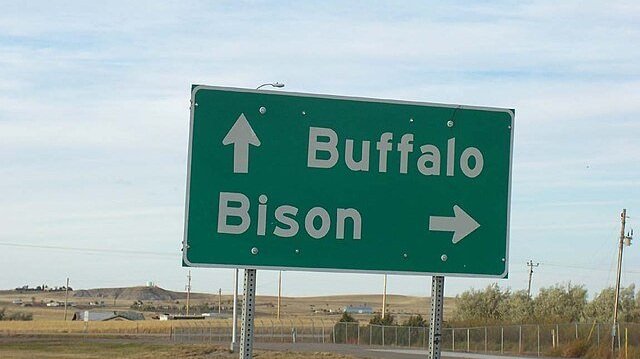WASHINGTON, D.C. – The monthly Cattle on Feed (COF) report was released Friday, March 17, 2023 with few surprises. On feed numbers March 1 were 96% of last year with placements falling to 93% of last year and marketings at 95% of last year. This fell in line with pre-release guesses. Regional placements in February trended towards Texas and Kansas where weather conditions permitted and reported more limited placements in Nebraska and Colorado.
Regardless of what weight division (calves under 600 pounds, 600-699 weights, 700-799 weights, 800-899 weights, 900-plus weights), all divisions for cattle placed in February 2023 were lighter than that of February 2022.
The market’s fundamentals are extremely clear — fewer beef cows in the market are contributing fewer calves and feeders to be had by both feedlots and packers. From a fundamental standpoint, one cannot argue the tremendous position this report puts cattle feeders and cow-calf producers in.
There remain strong undercurrents associating future cattle prices with the state of the economy. Most expert economists are now asserting the view that inflation can’t be tamed without throwing the country into some level of a recession. The interplay of controlling inflation and triggers of danger to the banking system will weigh on the Fed’s decision to raise interest rates.
Cattle and calves on feed for the slaughter market in the United States for feedlots with capacity of 1,000 or more head totaled 11.6 million head on March 1, 2023. The inventory was 4 percent below March 1, 2022.
Placements in feedlots during February totaled 1.73 million head, 7 percent below 2022. Net placements were 1.68 million head. During February, placements of cattle and calves weighing less than 600 pounds were 345,000 head, 600-699 pounds were 315,000 head, 700-799 pounds were 470,000 head, 800-899 pounds were 424,000 head, 900-999 pounds were 130,000 head, and 1,000 pounds and greater were 50,000 head.
Marketings of fed cattle during February totaled 1.74 million head, 5 percent below 2022.
Other disappearance totaled 58,000 head during February, 2 percent below 2022.
COLORADO:
The number of cattle and calves on feed for the slaughter market in Colorado feedlots with a capacity of 1,000 head or larger was estimated at 1,010,000 head as of March 1, 2023. The latest inventory was down 2 percent from February 1, 2023 and down 10 percent from March 1, 2022.
Cattle feeders with 1,000 head or larger capacity marketed an estimated 155,000 head of fed cattle during February 2023, down 9 percent from the previous month and down 18 percent from the February 2022 marketings.
An estimated 140,000 head of cattle and calves were placed on feed during February 2023, 15 percent below last month and down 20 percent from the February 2022 placements. Of the number placed in February, 18 percent weighed less than 600 pounds, 18 percent weighed from 600 to 699 pounds, 25 percent weighed from 700 to 799 pounds, 25 percent weighed 800 to 899 pounds and 14 percent weighed 900 pounds or greater.
Other disappearance for February, at 5,000 head, was unchanged from last month and last year.
MINNESOTA:
Cattle and calves on feed for the slaughter market in Minnesota feedlots with a capacity of 1,000 or more head totaled 95,000 head on March 1, 2023, according to the latest USDA, National Agricultural Statistics Service – Cattle on Feed report. This was unchanged from February but down 5 percent from March 1, 2022.
Placements of cattle and calves in Minnesota feedlots with a capacity of 1,000 or more head during February totaled 14,000 head, up 8 percent from January but down 7 percent from last year.
Marketings of fed cattle from Minnesota feedlots with a capacity of 1,000 or more head during February totaled 13,000 head, up 8 percent from January but down 7 percent from last year.
Other disappearance totaled 1,000 head.
IOWA: *Note: This report is a combination of estimates from the USDA Cattle on Feed survey for Iowa feedlots with a capacity of 1,000 or more head and the Iowa Department of Agriculture and Land Stewardship-funded Cattle on Feed survey for Iowa feedlots with a capacity of less than 1,000 head.
Cattle and calves on feed for the slaughter market in Iowa feedlots with a capacity of 1,000 or more head totaled 620,000 head on March 1, 2023, according to the latest USDA, National Agricultural Statistics Service – Cattle on Feed report. This was unchanged from February and unchanged from March 1, 2022.
Iowa feedlots with a capacity of less than 1,000 head had 535,000 head on feed, unchanged from last month but down 9 percent from last year.
Cattle and calves on feed for the slaughter market in all Iowa feedlots totaled 1,155,000 head, unchanged from last month but down 5 percent from last year.
Placements of cattle and calves in Iowa feedlots with a capacity of 1,000 or more head during February 2023 totaled 105,000 head, unchanged from January but down 9 percent from February 2022.
Feedlots with a capacity of less than 1,000 head placed 50,000 head, down 14 percent from January and down 30 percent from February 2022.
Placements for all feedlots in Iowa totaled 155,000 head, down 5 percent from January and down 17 percent from February 2022.
Marketings of fed cattle from Iowa feedlots with a capacity of 1,000 or more head during February 2023 totaled 103,000 head, unchanged from January and unchanged from February 2022.
Feedlots with a capacity of less than 1,000 head marketed 47,000 head, down 6 percent from January and down 24 percent from February 2022.
Marketings for all feedlots in Iowa were 150,000 head, down 2 percent from January and down 9 percent from February 2022.
Other disappearance from all feedlots in Iowa totaled 5,000 head.
NEBRASKA:
Nebraska feedlots, with capacities of 1,000 or more head, contained 2.53 million cattle on feed on March 1, according to the USDA’s National Agricultural Statistics Service. This inventory was down 6% from last year.
Placements during February totaled 435,000 head, down 12% from 2022.
Fed cattle marketings for the month of February totaled 460,000 head, up 1% from last year.
Other disappearance during February totaled 15,000 head, up 5,000 head from last year.
KANSAS:
Kansas feedlots, with capacities of 1,000 or more head, contained 2.46 million cattle on feed on March 1, according to the USDA’s National Agricultural Statistics Service. This inventory was down 2% from last year.
Placements during February totaled 425,000 head, down 1% from 2022.
Fed cattle marketings for the month of February totaled 405,000 head, down 10% from last year.
Other disappearance during February totaled 10,000 head, unchanged from last year.
TEXAS/OKLAHOMA: *Note: This report contains results from the March 2023 Cattle on Feed Survey collected during the first two weeks of March. Data provided by Oklahoma and Texas producers are the foundation of the estimates made for the Southern Plains region.
Cattle and calves on feed for slaughter market in Texas feedlots with capacity of 1,000 head or more totaled 2.78 million head on March 1, 2023, down 5 percent from a year ago.
Producers placed 360 thousand head in commercial feedlots during February, up 3 percent from a year ago.
Texas commercial feeders marketed 340 thousand head during February, up 1 percent from 2022.
On March 1, there were 2.49 million head of cattle and calves on feed in the Northern High Plains, 90 percent of the state’s total. The number on feed across the area was down 4 percent from last year but unchanged from the February 1 total.
February placements in the Northern High Plains totaled 323 thousand head, down 9 percent from the January total.
Marketings were down 6 percent from last month at 305 thousand head.
Cattle and calves on feed for slaughter market in Oklahoma feedlots with capacity of 1,000 head or more totaled 270 thousand head on March 1, 2023, down 10 percent from a year ago.
Producers placed 26 thousand head in commercial feedlots during February, down 26 percent from a year ago.
Oklahoma commercial feeders marketed 30 thousand head during February, down 32 percent from 2022.
Other disappearance during February totaled 1 thousand head, unchanged from a year ago.










